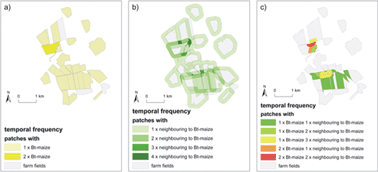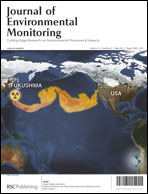Prioritizing GM crop monitoring sites in the dynamics of cultivation systems and their environment
Abstract
EU legislation stipulates that GM crops have to be monitored for potential adverse environmental effects. Monitoring preferably should take place in the most exposed areas—the cultivated fields and their neighbouring environment. Current monitoring designs do not give detailed consideration to the different exposure intensities in agricultural practice. At the same time, the selection of specific, more exposed sites is difficult considering the dynamic and diversity of crop cultivation and rotation systems and their environments. We developed an approach for prioritising the monitoring of on-farm and neighbouring sites based on differing exposure levels using a minimum dataset of cultivation and land use information. Applying a Bt-maize cultivation scenario to Brandenburg, Germany, where presently no GM crops are cultivated, we systemised and categorised areas with different spatio-temporal exposure intensities including 50 m, 200 m and 1000 m


 Please wait while we load your content...
Please wait while we load your content...